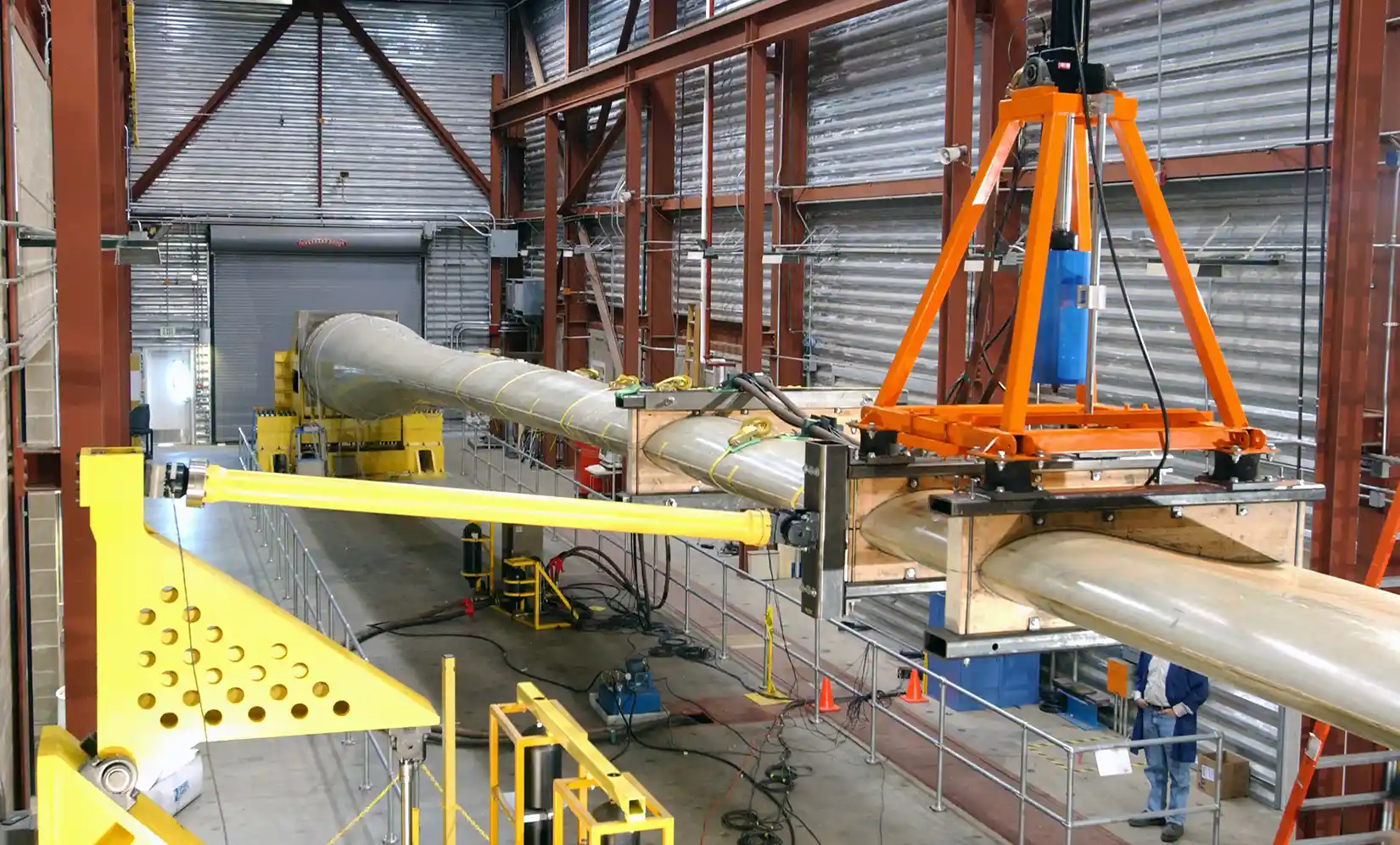Supply Chain Roadmap
An NREL-led study evaluated how the U.S. can establish and build a robust domestic supply chain to support the wind energy industry.

A two-phase study led by NREL explores gaps, opportunities, and development pathways for a domestic offshore wind energy supply chain. Photo by Warren Gretz, NREL
To support growing domestic supply chains for the U.S. energy industry, including providing existing suppliers with the ability to produce thousands of components while creating tens of thousands of U.S. jobs, requires a significant ramp-up in domestic manufacturing, ports, vessels, and workforce.
NREL led this project to create a roadmap that identifies challenges and solutions to developing a nationally focused wind energy supply chain that has the potential to manufacture all major components domestically by 2030.
The project was overseen by the National Offshore Wind Research and Development Consortium and conducted by a partnership among NREL, the Business Network for Offshore Wind, and DNV. Funding and support were provided by the National Offshore Wind Research and Development Consortium, the Maryland Energy Administration, and the U.S. Department of Energy.
What Are the Pathways?
Researchers developed a roadmap consisting of suggested short-, medium-, and long-term actions to overcome barriers to development and create a resilient and comprehensive offshore wind energy supply chain. Find out more below about what's needed to ramp things up and keep it all running. Learn more about the outcomes and impacts of each action in Section 4 of the 2023 report.
To build a strong supply chain foundation, the country needs to:
- Convene working groups focused on regional and holistic supply chain development
- Identify locations to build the next wave of supply chain development efficiently
- Assess the need for and impact of incentive mechanisms beyond existing programs
- Establish strategies and incentive mechanisms targeted at floating wind infrastructure
- Establish curriculum and funding streams for workforce training centers
- Conduct outreach and education activities with existing suppliers to increase awareness of opportunities.
To gain momentum with a smoothly running domestic supply chain, the country needs to:
- Construct the major supply chain facilities needed to meet the demand pipeline
- Leverage national, regional, and industry working groups to share and develop best practices for supply chain activities
- Incorporate learning from early-stage commercial-scale projects into ongoing operations and decision-making
- Train a sufficient manufacturing workforce
- Evaluate procedural and impact metrics for early-stage commercial-scale projects and incorporate best practices into ongoing supply chain development activities.
To maintain the U.S. supply chain, the country will need to:
- Maintain and upgrade key supply chain infrastructure to adapt to evolving technologies
- Expand supply chain infrastructure to new regions using lessons learned from early build-out
- Fill manufacturing gaps in supporting supply chains with domestic production.
Investments in Manufacturing Facilities Needed To Establish a Supply Chain by 2030
What Could a Domestic Offshore Wind Energy Supply Chain Look Like?
The second report builds on the high-level demand information from the first report and presents challenges that could delay supply chain growth, potential solutions to these challenges, and major factors that need to be considered to create a resilient, sustainable supply chain. In it, researchers offer a scenario they developed for a domestic supply chain to estimate the investment and time frame needed to develop key resources like manufacturing facilities, ports, vessels, and workforce.
Publications
The project included two phases, each with a published report:
A Supply Chain Road Map for Offshore Wind Energy in the United States, NREL Technical Report (2023)
The Demand for a Domestic Offshore Wind Energy Supply Chain, NREL Technical Report (2022)
Contact
Share
Last Updated Nov. 25, 2025
